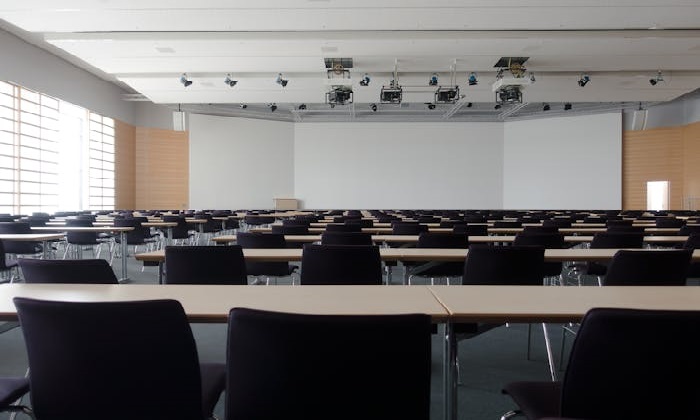In today’s fast-changing business landscape, the conference room has transformed from a simple meeting space into the hub of collaboration, decision-making, and innovation. With hybrid work, global teams, and advanced technology shaping how we communicate, business owners must ensure their conference rooms keep up.
But here’s the challenge: conference rooms are constantly evolving, and so are the costs associated with them. From audio-visual systems to furniture, from connectivity to acoustics, it’s no longer enough to buy a projector and a few chairs. Effective budgeting is now about planning for both the present and the future.
In this guide, we’ll walk through the key elements that affect conference room costs, how to budget smartly, and why strategic planning saves more money in the long run.
1. Why Budgeting for Conference Rooms Matters
A well-designed conference room impacts more than just meetings. It influences how employees collaborate, how clients perceive your business, and how efficiently decisions get made. Poorly equipped rooms lead to wasted time, frustrating experiences, and lost opportunities.
Budgeting properly ensures you invest in spaces that support productivity, reflect professionalism, and adapt to future needs without overspending.
2. Start with Goals, Not Gadgets
Before spending on the latest AV tech, ask: What do we want this conference room to achieve?
For internal collaboration: Do you need whiteboarding, brainstorming tools, or breakout options?
For hybrid teams: Is seamless video conferencing the top priority?
For client presentations: Do aesthetics, clarity, and impact matter most?
For training: Do you need recording capabilities or interactive displays?
Clear goals ensure you budget for the right features, not just the flashiest ones.
3. Key Cost Drivers in a Conference Room
Several factors influence the overall budget for a modern conference room. Understanding them helps you plan realistically.
a) Audio-Visual Technology
Displays: LED video walls, large-format displays, or projectors vary greatly in price.
Cameras: Basic webcams cost little, while high-end auto-tracking cameras add significantly.
Audio: Microphones, speakers, DSPs (digital signal processors), and acoustic treatment are essential for clarity.
b) Connectivity & Infrastructure
Cabling, power outlets, and network ports are often overlooked but crucial.
Wireless collaboration tools or BYOD (Bring Your Own Device) integration add convenience but cost more.
c) Furniture & Ergonomics
Conference tables, seating, and storage must balance comfort, style, and durability.
Cable management and integrated charging points add to costs but improve usability.
d) Room Design & Acoustics
Glass walls, high ceilings, and open layouts look modern but require acoustic treatment.
Lighting impacts both in-person visibility and video call quality.
e) Software & Licensing
Platforms like Zoom Rooms, Microsoft Teams Rooms, or Google Meet may require subscription costs.
Room booking systems or collaboration tools may add recurring fees.
f) Installation & Integration
Professional design and installation ensure equipment works seamlessly.
This includes system programming, testing, and training staff.
g) Maintenance & Support
Annual service contracts, upgrades, and technical support must be factored into the budget.
4. Setting a Realistic Budget Range
Conference room costs can vary widely depending on size and complexity:
Small huddle rooms (2–6 people): ₹2–6 lakhs
Medium conference rooms (6–12 people): ₹7–15 lakhs
Large boardrooms (12+ people): ₹20 lakhs and up
These ranges include AV systems, furniture, and basic integration but can increase with premium features like video walls, advanced automation, or high-end finishes.
5. Plan for Scalability
One of the biggest mistakes businesses make is budgeting only for immediate needs. With hybrid work and technology evolving quickly, future-proofing your investment is essential.
Choose modular systems that allow adding new devices later.
Invest in platforms that support regular software updates.
Ensure cabling and infrastructure can handle future bandwidth demands.
It’s better to budget slightly higher now than to face expensive overhauls later.
6. Balancing Cost and Value
Budgeting is not just about cutting costs—it’s about maximizing value. A cheap system that fails in a year costs more than a mid-range system that lasts five. Consider:
Durability: Commercial-grade products outlast consumer-grade alternatives.
Ease of Use: Complex systems may require training and waste time.
Support: Reliable service reduces downtime and frustration.
Look at the total cost of ownership (TCO) over 5–7 years, not just the upfront price.
7. Avoiding Common Budgeting Mistakes
Ignoring acoustics: Fancy microphones can’t fix echo-prone rooms.
Underestimating infrastructure: Cabling, power, and installation add up.
Forgetting recurring costs: Subscriptions, maintenance, and updates must be included.
Skipping professional input: DIY approaches often result in wasted spend and poor performance.
8. Getting Professional Help
This is where AVCore AV Consultants adds value. Instead of guessing, they assess your space, identify priorities, and provide accurate cost estimates. Professional partners help you:
Avoid overspending on unnecessary features.
Ensure compatibility across systems.
Design rooms that look great and function flawlessly.
Plan budgets that balance today’s needs with tomorrow’s growth.
9. Budgeting Checklist for Business Owners
Here’s a quick framework to simplify your planning:
Define goals for the room (collaboration, clients, hybrid work).
Identify must-have vs. nice-to-have features.
Estimate room size and capacity.
Allocate budget across AV tech, furniture, infrastructure, and acoustics.
Factor in installation, training, and maintenance.
Plan for scalability and upgrades.
Get expert consultation for accuracy.
Final Thoughts
Conference rooms are no longer static—they’re living ecosystems of technology, design, and people. Budgeting for them requires more than picking equipment; it requires vision, planning, and an understanding of long-term value.
By starting with clear goals, understanding cost drivers, and planning for scalability, business owners can create spaces that support collaboration, impress clients, and adapt to future demands.
Investing wisely today ensures your conference room remains a powerful asset tomorrow. And with expert partners like AVCore Audio Visual Consultants, you can navigate the budgeting process confidently and strategically.


